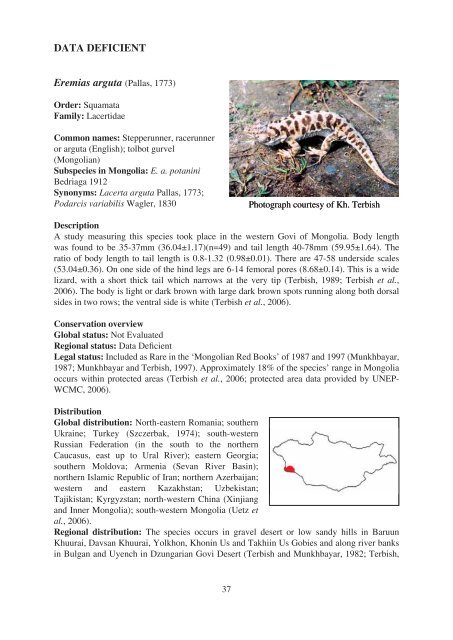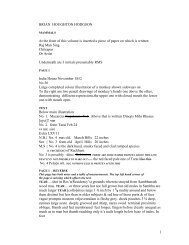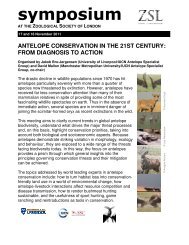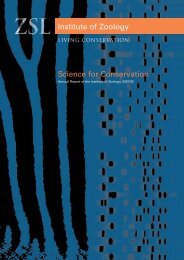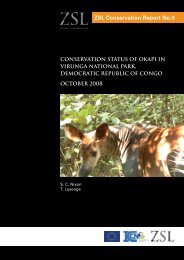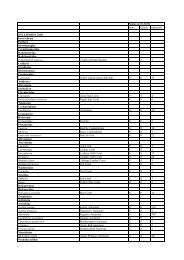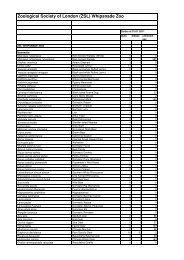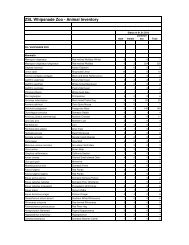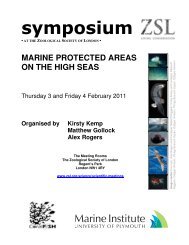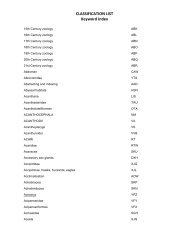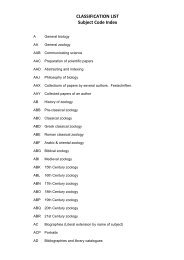Summary Conservation Action Plans for Mongolian Reptiles and ...
Summary Conservation Action Plans for Mongolian Reptiles and ...
Summary Conservation Action Plans for Mongolian Reptiles and ...
Create successful ePaper yourself
Turn your PDF publications into a flip-book with our unique Google optimized e-Paper software.
DATA DEFICIENT<br />
Eremias arguta (Pallas, 1773)<br />
Order: Squamata<br />
Family: Lacertidae<br />
Common names: Stepperunner, racerunner<br />
or arguta (English); tolbot gurvel<br />
(<strong>Mongolian</strong>)<br />
Subspecies in Mongolia: E. a. potanini<br />
Bedriaga 1912<br />
Synonyms: Lacerta arguta Pallas, 1773;<br />
Podarcis variabilis Wagler, 1830<br />
Description<br />
A study measuring this species took place in the western Govi of Mongolia. Body length<br />
was found to be 35-37mm (36.04±1.17)(n=49) <strong>and</strong> tail length 40-78mm (59.95±1.64). The<br />
ratio of body length to tail length is 0.8-1.32 (0.98±0.01). There are 47-58 underside scales<br />
(53.04±0.36). On one side of the hind legs are 6-14 femoral pores (8.68±0.14). This is a wide<br />
lizard, with a short thick tail which narrows at the very tip (Terbish, 1989; Terbish et al.,<br />
2006). The body is light or dark brown with large dark brown spots running along both dorsal<br />
sides in two rows; the ventral side is white (Terbish et al., 2006).<br />
<strong>Conservation</strong> overview<br />
Global status: Not Evaluated<br />
Regional status: Data Defi cient<br />
Legal status: Included as Rare in the ‘<strong>Mongolian</strong> Red Books’ of 1987 <strong>and</strong> 1997 (Munkhbayar,<br />
1987; Munkhbayar <strong>and</strong> Terbish, 1997). Approximately 18% of the species’ range in Mongolia<br />
occurs within protected areas (Terbish et al., 2006; protected area data provided by UNEP-<br />
WCMC, 2006).<br />
Distribution<br />
Global distribution: North-eastern Romania; southern<br />
Ukraine; Turkey (Szczerbak, 1974); south-western<br />
Russian Federation (in the south to the northern<br />
Caucasus, east up to Ural River); eastern Georgia;<br />
southern Moldova; Armenia (Sevan River Basin);<br />
northern Islamic Republic of Iran; northern Azerbaijan;<br />
western <strong>and</strong> eastern Kazakhstan; Uzbekistan;<br />
Tajikistan; Kyrgyzstan; north-western China (Xinjiang<br />
<strong>and</strong> Inner Mongolia); south-western Mongolia (Uetz et<br />
al., 2006).<br />
Regional distribution: The species occurs in gravel desert or low s<strong>and</strong>y hills in Baruun<br />
Khuurai, Davsan Khuurai, Yolkhon, Khonin Us <strong>and</strong> Takhiin Us Gobies <strong>and</strong> along river banks<br />
in Bulgan <strong>and</strong> Uyench in Dzungarian Govi Desert (Terbish <strong>and</strong> Munkhbayar, 1982; Terbish,<br />
37<br />
Photograph courtesy of Kh. Terbish


